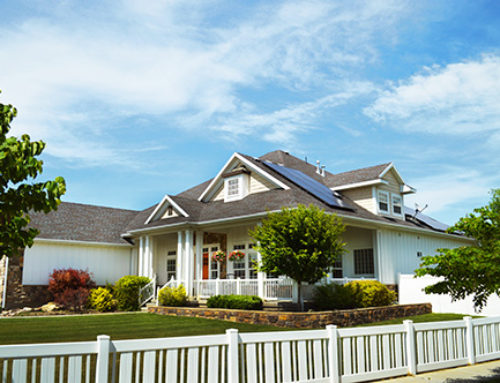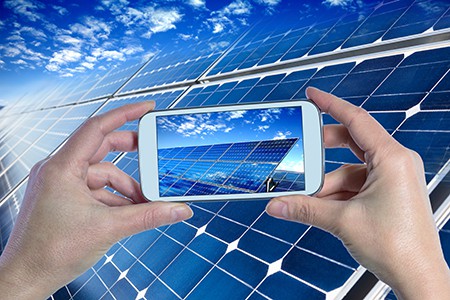
Wondering: What is Alternative Solar Energy & How Does It Work?
In this age of global climate change and rising energy costs, alternative energy sources are no longer just an interesting option, they are a necessity.
Solar energy is one of the most popular forms of alternative energy today, but what is solar energy?
Solar energy comes in active, passive, and thermal forms:
Active Solar Energy
Active solar energy is created when thin panels constructed of many individual solar energy cells collect sunlight and convert it into electricity.
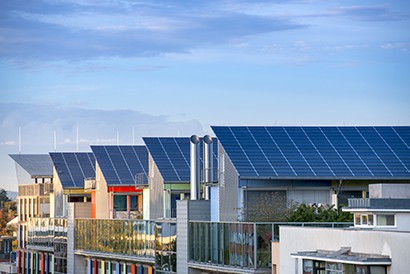
That electricity is then fed to a battery system which converts it once again into AC or DC power to be used in your home. Solar panels can be installed on roofs, walls, or in commercial applications on the ground.
In some parts of the U.S., so much solar energy can be produced in a home application that excess is available to be sold back to the utility company. In other areas, solar electricity simply reduces the homeowner’s reliance on coal-generated electricity, significantly reducing heating and cooling costs.
You might be surprised to learn that active solar energy was discovered in 1839 by a French physicist named Edmund Becquerel, and has been available in its current photovoltaic form since 1908 when William J. Bailey of the Carnegie Steel Corporation built a photovoltaic cell out of a small box and copper wire.
Passive Solar Energy
Passive solar energy is a solar energy alternative that involves using building materials that collect heat in cool weather and reflect heat in warm weather.
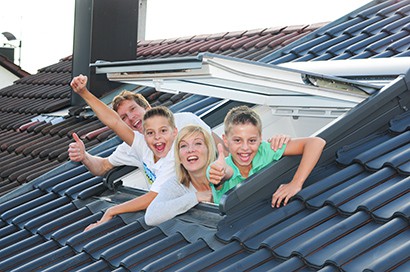
Homes designed to run almost exclusively on a passive solar energy alternative have been around since the 1970s. To understand passive solar energy, hold your hand above concrete pavement on a hot summer afternoon, then hold it over the grass. The same principles work when it comes to home construction.
Even before the 21st century, as early as the 1800s, home builders understood that window glass combined with brick floors resulted in warm rooms good for growing plants. Many Victorian homes included a sunroom or plant room, a good example of an early use of passive solar alternative energy. In homes built in the 1600s and 1700s, fireplaces and hearths are massive room features, not just for fire prevention, but because stone and brick hold onto heat.
Thermal Solar Energy
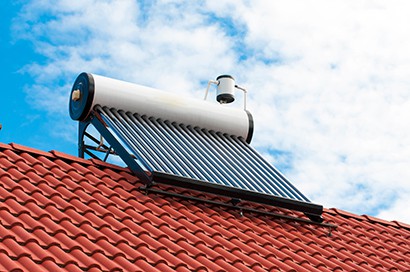
Thermal solar energy is created when water is heated by the sun and then piped into a steam generator to produce electricity to warm homes or heat water. Many people have researched and installed their own solar water heating system, an inexpensive and relatively easy home project that can reduce electricity costs dramatically. (Air conditioning and electric water heaters tend to be the biggest electricity users in a home.)
What are Alternative Solar Energy Sources?
Many people think that alternative solar energy sources are a thing of the future, or that a solar power alternative is just too impractical or expensive. The truth is that solar power alternative energy gets more affordable every day, and active solar panels energy is just one form of this technology.

Renewable energy is any kind of energy that is not generated by fossil fuels like coal, oil, or gas. Wind energy, solar, geothermal, and hydroelectric power are all examples of renewable energy. When these sources are combined, countries can power their utilities with 100% or nearly 100% renewable energy sources.
Independence from carbon-rich fossil fuels isn’t a distant dream; it’s happening right now. Iceland currently gets 100% of its energy from renewable sources, mostly geothermal and hydroelectric power. Germany, a cloudy country even on nice days has invested heavily in solar panels alternative energy and currently gets as much s 78% of its energy from renewable sources.
Sweden, Costa Rica, Nicaragua, Uruguay, and the U.K have all committed to 100% renewable energy within the next 10 to 31 years, if not sooner. Costa Rica already gets up to 99% of its power from renewable energy, and Norway is already at 98%.
Perhaps the most surprising fact is that China, the world’s biggest polluter, is also the world’s biggest investor in renewable energy. China owns five of the six largest manufacturers of solar panels alternative energy.
Clearly, when it comes to energy solar is not on the horizon, it is already here.
National, State, and Local Government Involvement is Crucial
You might wonder, if renewable energy technology is so good why is it not used more often in the U.S?

It might surprise you to know that often local building codes, lack of affordable government-backed loans for retrofitting homes with renewable sources, and lobbying by the fossil fuel industry are much more of an obstacle than technology.
California has set one of the most ambitious goals regarding these kinds of restrictions in the nation, promising all new residential construction with zero net energy by 2020, and all new commercial construction with zero net energy by 2030. California has also committed to making all eligible low-income households able to participate in a low-income energy efficiency program by 2020.
Changing building codes and regulations may sound easy, but it can be surprisingly difficult. Meanwhile, individuals are not waiting for government approval and are investing in new energy solar as well as other renewable technologies.
Easy Ways to Harness Renewable Energy Today
No matter where you are, no matter who you are, no matter how much or how little money you have to invest in solar and other renewable technologies, you still can take significant steps to harness the heat of the sun and the energy in wind and water right now.
Here are some easy first steps:
- Understand your energy footprint. Most utility companies offer energy audits for a low fee and give a list of suggestions for reducing use.
- Conserve where you can. Unplug ‘vampire’ appliances when not in use, do laundry during low use times, turn the thermostat up in summer, down in winter.
- Plant trees. Shading your home can reduce the temperature inside by as much as 20 degrees F.
- Need a roof? Consider metal. Metal roofs reflect the sun, saving up to 50% on cooling.
- Research the cost of solar and wind power installations in your area.
- Get involved in city council meetings. Most are open to the public. Understand the current obstacles to renewable installations in your area.
- Add an insulating layer to your drapes.
- Buy solar reflective film (available in most home improvement stores) for your windows if you can’t replace them.
The sun burns bright enough in one minute to power Planet Earth for an entire year. Don’t wait until solar technology knocks on your door. Get involved now. Learn, adapt, save money, help the planet. It’s easy, and it’s not just the future. It’s right now.
